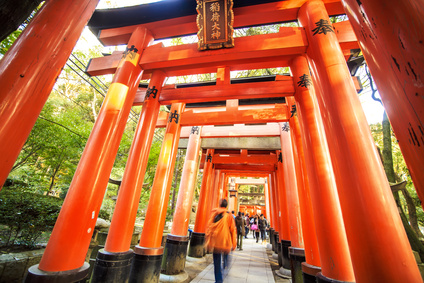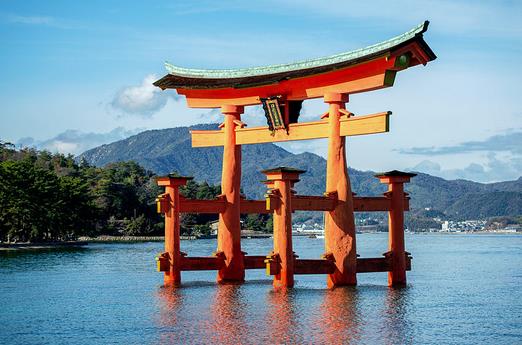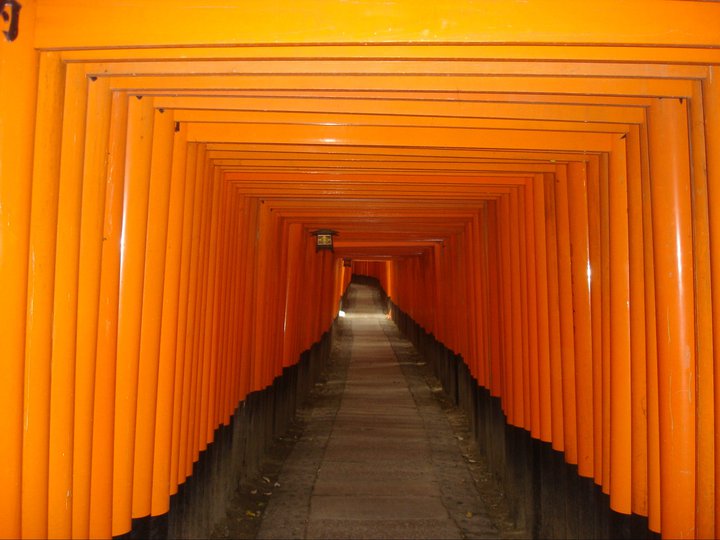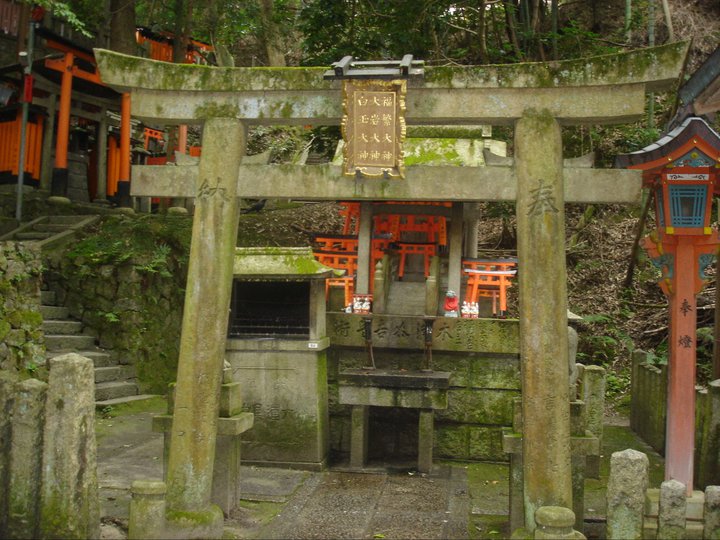| Actualité |
Torii, the sacred gates
par Xehanort

Torii (鳥居) are traditional Japanese gates often found at the entrances of Shinto and Buddhist temples in Japan. The places where they are built are considered sacred.
A Torii is a border separating the physical world from the spiritual world. If you cross that border through this gate, you must cross it again on your way back. A Japanese person won't cross a Torii if that person isn’t sure whether he or she will be able come back the same way. In Buddhism, there exists a protective field called “Kekkai” (結 界).
Although traditionally made of stone and wood, a Torii can also be made of copper, steel or concrete. Typically, a Torii is covered by a crimson coat or bright red paint, not only to protect it from corrosion, but because this color is believed to repel evil spirits.
Torii are thought to have appeared in the tenth century, during the Heian era. This was the first time in Japanese history when such a gate was mentioned. However, it’s difficult to say whether Torii are a Japanese concept, or whether the Japanese borrowed them from another culture. Even specialists don't share the same views. Some believe that Torii are evolutions of a gate system that indigenous tribes used to separate sacred places. Others believe that Torii might have been inspired by “Torana,” a type of gate in Hindu and Buddhist architecture on the Indian subcontinent. Similar structures exist in China, Thailand and Korea, as well.
However, a Japanese myth does exist, explaining the origin of Torii.
The world was plunged into darkness and chaos. The wrath of Amaterasu, the Goddess of the Sun, led her to retreat to a cave in Paradise (ama no Iwato). To make her come out again, the Gods thought over several solutions and decided to set a perch with roosters at the entrance of the cave. They would then sing eternally. Intrigued by their songs, the Amaterasu walked out of the cave, and the world was again bathed in light. Later, people decided to build bird perches at the entrances of shrines.
You might have noticed that the word “Torii” is composed of the Kanji 鳥, which means “bird.” The second Kanji 居 means “to be.” The literal translation of “Torii,” then, is “Where birds are.”
Many Torii variants exist in which the incline of the posts (hashira) varies, or the upper lintels (kasagi) are straight or curved, etc. The two most common types are the Shinmei Torii (神明鳥居) and the Myôjin Torii (明神鳥居). Respectively, they are “straight Torii” and “curved Torii.”
| Straight | Curved |
|---|---|
| Kasuga torii (春日鳥居) | Inari torii (稲荷鳥居) |
| Hachiman torii (八幡鳥居) | Ryōbu torii (両部鳥居) |
| Kashima torii (鹿島鳥居) | Sannō torii (山王鳥居) |
| Ise torii (伊勢鳥居) | Miwa torii (三輪鳥居) |
| Kuroki torii (黒木鳥居) | etc. |
| etc. |

Famous Torii on Miyajima, photo by Jordy Meow, Creative Commons

Tunnel of Torii, Fushimi Inari-Taisha shrine, Kyôto, photo by Xehanort

photo by Xehanort
Next time you visit Japan, you'll have a better understanding of these traditional gates. Don't forget to cross them again on your way back!



















Shiroiookami